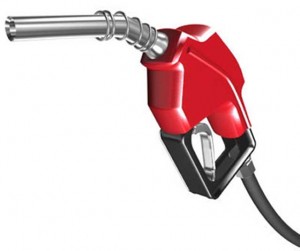
Pump prices are approaching record levels for 2009 despite the fact that demand for gasoline is down.
Driving less but paying more at the pump? You’re not alone, it seems. There’s a growing disconnect between price and demand, according to the latest data.
Blame petroleum prices which have surged about 125% since they fell to the year’s low of $35 a barrel, early this year. Just since the beginning of September, the price of a barrel has risen 20%; on Wednesday, various markets showed another gain of nearly $2.00, with crude generally closing around $80.
Though refining and transportation costs, among other things, come into the picture, the price of crude accounts for two-thirds of what you’ll typically pay at the pump, so that means the numbers are spinning a good bit faster since regular no-lead fell to an average $1.61 over the winter and as low as $1.20 in some parts of the country.
The fuel price tracking site, GasBuddy.com, reports that motorists are now paying around $2.61 a gallon for no-lead, close to the $2.67 record for 2009, and the figure could keep climbing if the run-up in petroleum doesn’t abate soon.
Few experts believe oil will surge anywhere near the $150 a barrel of mid-2008, nor will gasoline top $4.00 a gallon anytime soon. One reason is that demand is down dramatically as a result of the recession – and motorists curbing their driving in order to reduce spending on fuel.
But producers and speculators are watching signs of recovery in global financial markets and, in particular, resurgent demand for petroleum in emerging markets like China and India. Their strong growth helped spur last year’s fuel price run-up.
Another reason behind the current run-up is that refiners have been hedging their bets, curbing production to stay ahead of the weak American economy. But with even the slightest signs of recovery – and U.S. motorists driving more – that creates a shortfall in supplies that triggers increased pricing.
With more Americans switching to fuel-efficient vehicles, the demand curve – which had gone steadily up over the decades – is expected to continue trending down, even in a recovery. A Wall Street Journal report forecasts daily demand will drop from the current 19 million barrels to just 17 million between now and 2020. But that is likely to be more than offset by emerging market needs.
And that almost certainly means prices will continue going up. General Motors CEO Fritz Henderson recently told TheDetroitBureau.com that the automaker’s plans are being based on a $4-a-gallon norm, going forward. Most auto manufacturers are taking a similar position. But it remains to be seen what impact that will have on the broader U.S. economy.
